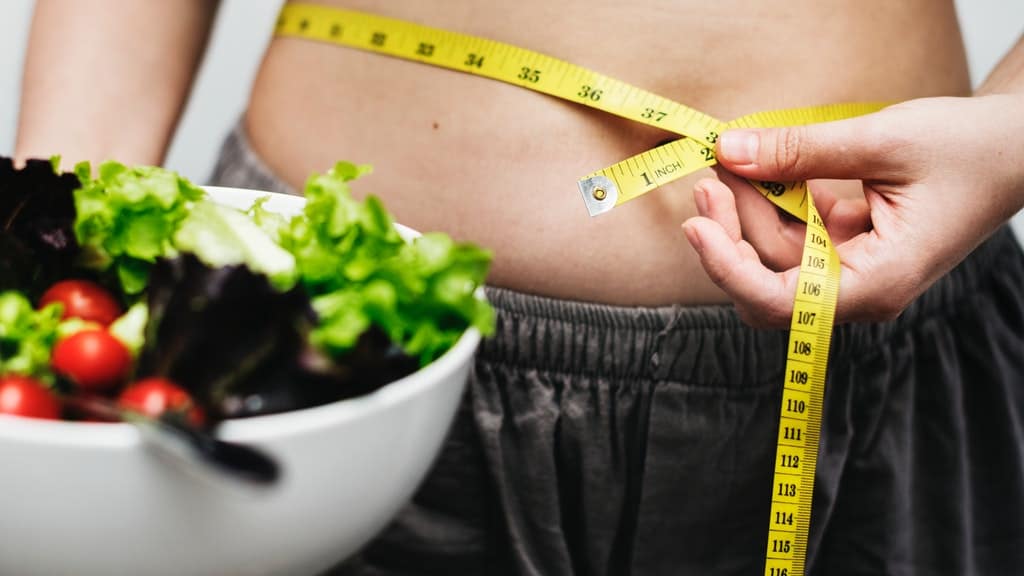People are trying the keto diet all over the world for many different reasons. It’s known for its ability to help in weight loss, but it has shown benefits for a number of different health concerns as well.
It’s used by athletes, celebrities and all types of individuals. While it is associated with a low-carb intake, it also has a deeper philosophy for why our bodies may function better without carbs and sugar.
The keto diet can help your body increase its ability to burn fats and simultaneously improve your health.
With all these positive benefits, you may be wondering how you can start to integrate the ketogenic diet into your life. Here is a guide for beginners in understanding the keto diet plan and safely start to transition.
What is the Keto Diet
The word “keto” in its name comes from how the body produces a different type of fuel called ketones to replace glucose when on the diet. This is called “ketosis” and happens when you are not intaking sugars or carbs and glucose is not available in your bloodstream.
On the ketogenic diet, you also limit protein. Too much protein can be converted to blood sugar and prevent ketosis.
Ketones are produced in the liver and derived from fat. They can be used as fuel throughout the body. When your body changes to burning fat and using ketones as fuel instead of using glucose, your insulin levels will drop and you will burn off body fat more efficiently.
Your body also produces ketones while fasting. Fasting periodically is widely known to provide many benefits for the body. But the ketogenic diet can help you get these same benefits without a break in eating.
How to Follow the Keto Diet
While following a keto diet plan, carbohydrates are limited to about 20 grams per day. You should keep consuming fiber for your digestive health.
Some ways to improve your keto diet experience are to keep protein consumption to moderate levels. This may be less desirable if you are very athletic or weight training. But too much protein can be converted to glucose in the bloodstream. A good guideline is one gram of protein per kilogram of weight.
Eating fats is another important aspect of the diet. Fats can help you feel fuller and be less hungry, without interrupting the ketosis process. Increasing fats can help if you’re struggling with hunger.
It’s important to avoid snacking when you are not hungry. Eating for fun or out of habit can reduce ketosis.
Occasional fasting, such as skipping meals, can also boost the ketosis process.
What Foods To Eat
Healthy fats and oils. This can include animal fats, coconut oil, olive oil, butter, ghee, palm oil, and others.
Protein. This can be from animal or plant products.
Vegetables. It’s very important to eat a variety of vegetables to ensure you are meeting your nutritional needs.
Dairy. Cheese, butter, and milk can offer many nutritional benefits that are easy to digest.
Nuts and seeds. These offer protein, vitamins, and fats. Try soaking them to make them more digestible.
Water, coffee or tea without no sweeteners.
An occasional glass of wine.
Gluten-free and low-carb bread.
What Foods to Avoid
Any foods that have high levels of sugar or starch.
- Pasta
- Rice
- Potatoes
- Processed food
- Bread and pasties
- Beer
- Sugary soft drinks
- Low-fat dieting products
- Candy
Keto Diet Plans
Breakfast can be a classic bacon and eggs, but skip the toast.
It may be acceptable to skip breakfast entirely. If you aren’t hungry, it’s okay to wait until you are hungry later in the day. But, unless you are fasting, make sure to eat periodically throughout the day.
For lunch, you may choose something simple like a salad with a side of nuts. Make sure to integrate high-nutritional leafy greens and varieties of ingredients to feed your body. Having a variety of nuts and seeds for snacks throughout the day can help if you are still hungry.
For dinner, choose a meat or vegan protein source with a side of vegetables and cheese. Make sure to liberally add oils and fats, protein and fiber.
The Keto Diet Benefits
It is well known that the ketogenic diet can bring benefits to weight loss endeavors, but it is even known it be anti-inflammatory, anti-aging, and cancer-fighting. When correctly followed, the ketogenic diet can offer the following benefits.
- Increased fat burning and weight loss.
- Less hunger and more control over your appetite.
- More energy and higher concentration by avoiding blood sugar swings, after the initial “keto flu.”
- Increased control of blood sugar levels.
- Fewer stomach upsets such as gas and cramps.
- Increased endurance.
Precautions for the Keto Diet Plan
There are some initial changes that will happen in your body after starting the ketogenic diet. They may be unpleasant and can interfere with work performance. Be aware of the keto flu, that may leave you needing to rest. Making the transition gradually can help your body overcome some of these symptoms.
Some sources say that the body becomes more acidic in ketosis, so be sure to choose alkalizing foods and eat adequate vegetables. You may choose to have herbal tea, which can also provide your body with nutrients.
For people with diabetes, ketosis may trigger a dangerous condition of ketoacidosis. If your body stores too many ketones, the blood can become too acidic. This may damage the liver, kidneys and the brain. If left untreated, it can be a fatal condition. Symptoms of this are dry mouth, frequent urination, nausea, bad breath, and breathing difficulties.
Ketogenesis is a natural metabolic response that activates the burning of fat cells into energy. However, with extreme fasting beyond the recommended low-carb intake suggested for a ketogenic diet, ketone levels may become too high. This can result in dangerous symptoms.
It is recommended that the ketogenic diet is done for a month or two, followed by a more sustainable diet plan. Prolonged use of the ketogenic diet may lead to muscle loss and decreased metabolism.
If the ketogenic diet doesn’t include lots of vegetables and lean sources of animal protein, and fats are overconsumed, it may do more harm than good. It is good to follow a balanced keto diet plan to ensure your diet isn’t putting you at risk. Monitor your health closely whenever you make dramatic changes to your diet.
Challenges of the Keto Diet and How to Overcome Them
Side effects of transitioning to the ketogenic diet can include a headache, tiredness, fatigue, muscle cramps or heart palpitations. If you choose to start gradually transitioning to the ketogenic diet, try decreasing your consumption of carbs over the course of two weeks to a month.
If you choose to cut out carbohydrates and sugars right away, the symptoms usually clear up in about a week.
Water retention may cause your body to release this excess water weight when you transition. This can cause frequent urination and in some cases lead to dehydration. Be sure to drink plenty of water and consume electrolytes.
People Who May Benefit From the Keto Diet
The ketogenic diet has been shown to benefit certain disorders and helps achieve specific health goals. Here are a few types of people that can benefit from the ketogenic diet.
- Women with the polycystic ovarian syndrome may find that their hormonal levels balance.
- There have been some studies that indicate an improvement of symptoms for those on the autism spectrum.
- Bodybuilders must increase protein intake to keep muscle mass but will benefit from the increased fat burning.
Ketogenic Diet May Come With higher Risks for Some Individuals
If you are pregnant or breastfeeding, it is not advised to follow the keto diet plan. Doing so may decrease milk supply, making it harder to help your baby gain weight. If you are pregnant, there is a concern that you may struggle with getting enough calories, energy or nourishment.
This can negatively impact your baby as it is trying to grow. The transition into motherhood is not the ideal time to go on a weight loss diet, and it’s recommended you wait until you are trying to lose the baby weight to begin the ketogenic diet.
Final Thoughts on the Ketogenic Diet
The ketogenic diet is a great way to help your body burn off excess fat. This happens by triggering a metabolic process that is similar to when you begin fasting. This can have numerous benefits for your body and may positively affect some health problems.
But the ketogenic diet can also aggravate certain health problems and is considered risky for some individuals.
With any diet, be sure to carefully transition and monitor your health. It is recommended to follow a balanced keto diet plan or seek the help of a nutritionist. If you aren’t meeting your nutritional needs on a regular basis, your body may suffer from malnourishment or become unbalanced.
But if you follow the ketogenic diet plan carefully, it can offer many benefits and help you on your journey to better health and weight management. Cutting out unhealthy foods and refined sugars may benefit any individual struggling with weight problems or health concerns. But the ketogenic diet takes it one step further and gives you a plan to follow that will increase your body’s ability to burn fat.














 Community
Community

